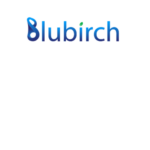
Today, data is the key to every online business’s success. The more accurate and updated your data is, the greater your chances of winning over competitors and the market.
However, acquiring accurate and updated data is not that easy. If you set out to do it manually, you’ll have to navigate through a vast landscape of websites, extract relevant information, and ensure its quality one by one.
This makes your data search very time-taking and prone to errors. For that reason, we recommend using web scraping and analytics to your advantage and automating the process for good.
So in this post, we’ll explore how you can improve your existing data through web scraping and analytics in simple steps.
Let’s get started!
Understanding Existing Data
If you’re completely new to data collection and data analysis, let’s quickly review what ‘existing data’ means here.
By existing data, we are referring to the data that your organization already possesses. It may include:
- Customer Data (such as purchase history, demographics, behavior data, etc.)
- Sales and Revenue Data (product/service pricing, primary and secondary sales channels, etc.)
- Website Analytics Data (website traffic, user engagement data, conversion rates, CTRs, etc.)
- Operational Data (inventory levels, production data, etc.)
- Financial Data (financial statements, balance sheets, etc.)
- Market Research Data (market surveys, consumer insights, competitor analysis, industry reports, market trends, etc.)
As for the format of this data, it could be in any of the following forms:
- Databases
- Spreadsheets
- Log files
- PDFs
- Images
- Media files
Web scraping can help improve many types and formats of your existing data, especially web analytics and marketing research data. How so? Read below!
Understanding Web Scraping
By definition, web scraping refers to the process of automatically extracting data from websites. This is how it works:
- Identify target websites or website pages.
- Choose a web-scraping tool or library based on your programming language. Some of the most popular web scraping tools include Scrapy and Beautiful Soup for Python and Puppeteer for JavaScript.
- Understand the structure of the target website to identify the HTML elements containing the data you need. It may involve inspecting the HTML source code and understanding document structure, class names, IDs, and other relevant attributes.
- Use the chosen web scraping tool to write code that fetches the HTML content of the target web page. You can simply send an HTTP request to the website’s server and retrieve the HTML response.
- Parse the HTML content and extract the data.
- Clean, process, and validate data. You need to do this because all of the collected data is neither correct nor useful for your website. But you don’t have to do it manually. There are several good tools out there that help with it. For example, DataTrue offers tag QA solutions, while Pandas offers data cleaning features. If you’re more interested in studying data, Pandas is for you. But if you’re more interested in marketing tags, DataTrue is the right pick for you.
- Choose a suitable storage format (such as CSV, JSON, or a database) to save the extracted data. It makes it easier to retrieve and re-analyze data later (if need be).
Also, some websites use JavaScript or AJAX to load content dynamically. In any such cases, you’ll need to use headless browsers or dynamic scraping techniques to ensure you get your hands on all the relevant data.
Plus, you also need to ensure that your web scraping activities comply with the website’s terms of service and all applicable legal regulations. Try to avoid overwhelming the target website with excessive requests. It could lead to server strain and cause disruptions!
3 Ways to Improve Existing Data
Now that you have a complete understanding of ‘existing data’ and what web scraping is, let’s check out a few ways using which you can improve your existing data to improve your organization’s operations:
- Identify Gaps: Using web scraping, you can analyze your old data and check if there are any missing data points in your dataset. It can help you conduct a comprehensive analysis of the entire data and make more informed decisions.
- Identify Patterns: You can use the combination of web scraping (to find new data) and advanced analytics techniques to find correlations, trends, and patterns between old and new data. This can help you predict future trends and make data-backed decisions!
- Standardize Data: You can also use the combination of web scraping and analytics to clean and standardize your existing data. Gather external data to compare against your dataset and identify anomalies, inconsistencies, or missing values. Then, apply analytics techniques, such as data profiling or outlier detection, to cleanse data by addressing inaccuracies, removing duplicates, and standardizing formats, improving its overall quality and usability.

















































